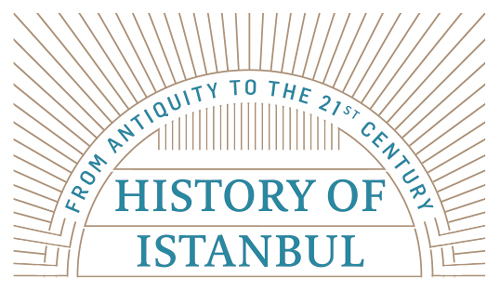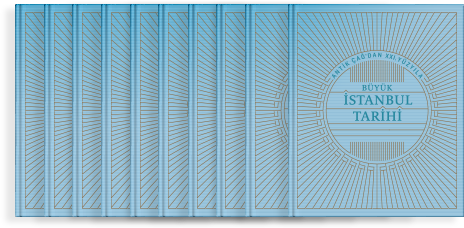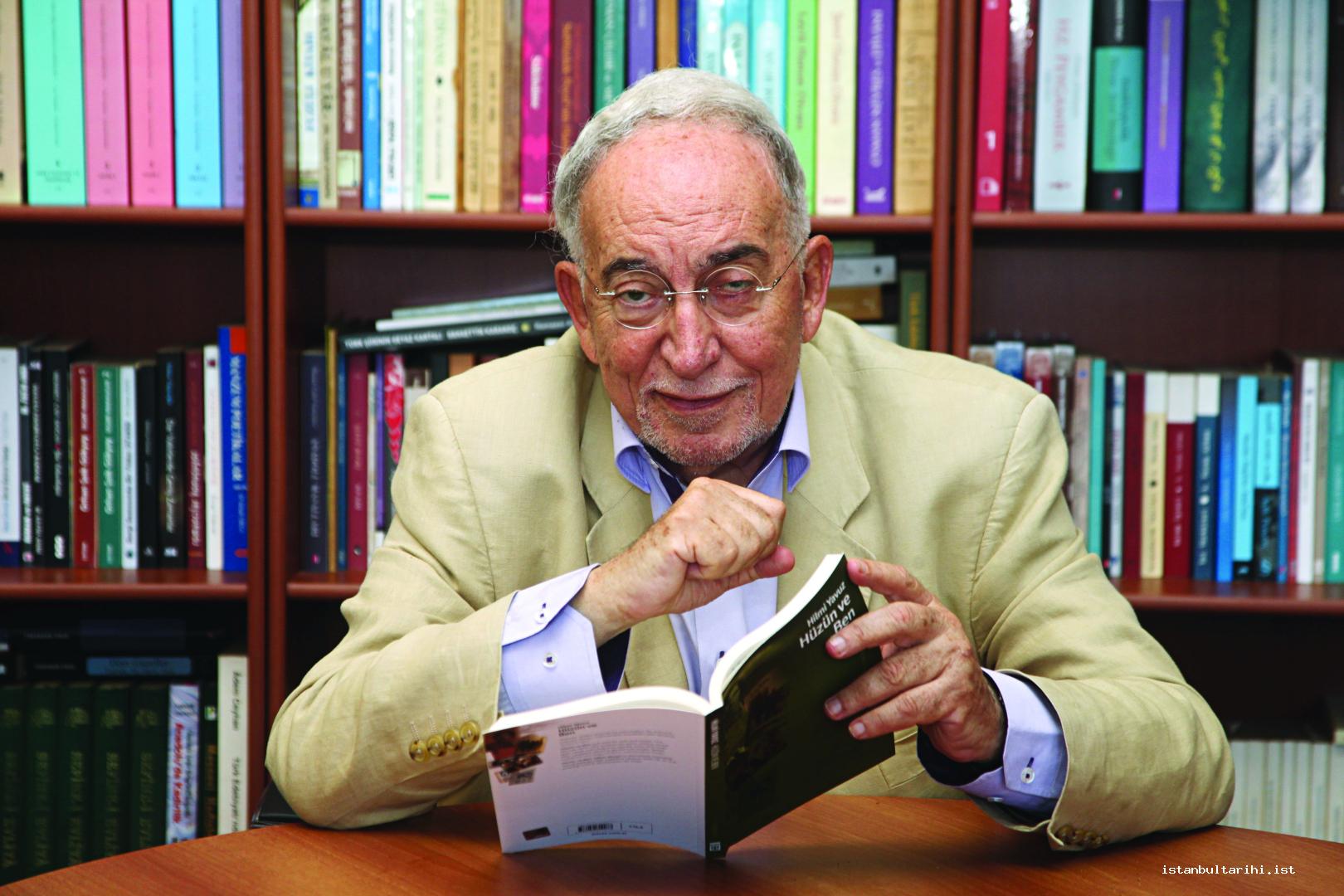
Dear Mister Yavuz, I know that you are closely interested in Istanbul both as an Istanbulite and an intellectual, that you have opinions of your own about Istanbul, moreover your early youth passed in historical peninsula (essence of Istanbul), actually in the oldest neighborhood of the essence of Istanbul, Fatih. When have you met Istanbul? What kind of a meeting was that? I hope to start from those days and reach today.
Sure… However, first I need to express that I was born in Istanbul but my national identity card reads Biga. It is useful to express its reason as well. When I was born, my father was the district governor of Biga. My mother gives birth to me at German Hospital because Biga does not have necessary facilities in 1936. I was born in Istanbul, the registrar of Biga says my father when he carries out the procedures required for my identity card, “Although your son is born in Istanbul, we want to have him as a Biga citizen. Would you mind if I register his birth place as Biga?” My father says that he would not mind. However, as you know very well, most of my childhood passed at the country districts where my father served as a governor.
You also mention those districts in your book called Hüzün ve Ben (Melancholy and Me).
Yes. My father was appointed to Güneyce, a newly assigned district of Rize, when he was the district governor of Orhangazi in 1945. I guess his pride was hurt because of being appointed to Güneyce which recently became a district from a township, while he was expecting to become a governor as a senior administrator. He got a medical report and we moved to Istanbul all of a sudden. We became guests at the big, wooden family house where the sons of my father’s aunt lived. I studied 4th grade of primary school at the 40th Primary School, it is now called Akşemsettin Primary School.
Was it a so-called “teeny-tiny house” or a mansion?
No, no, a teeny-tiny house. A small wooden house. Three-storied… The cousins were three siblings, each of them used to live in one of the floors with their wives and children. As far as I remember, they gave us a room in one of those floors and we lived there for a year. This house was in Zeyrek, in a street called Fenerci Hüseyin Dead-end (Lantern Seller Hüseyin Dead-End), I remember the name quite clearly. Just at the right side of the dead-end there was a big electricity, in the words of my father “transforming”, centre; saying “Attention!” with a sign of skull … Just at the right side of the street there was a big garden, one another on the left… A garden gate and a corridor, a road corridor… There was an old wooden house within that garden on the right. From time to time, we used to go over the fences of that house, enter the garden and pick up plums from the fruit trees in the garden. There was something as “picking up” back then…
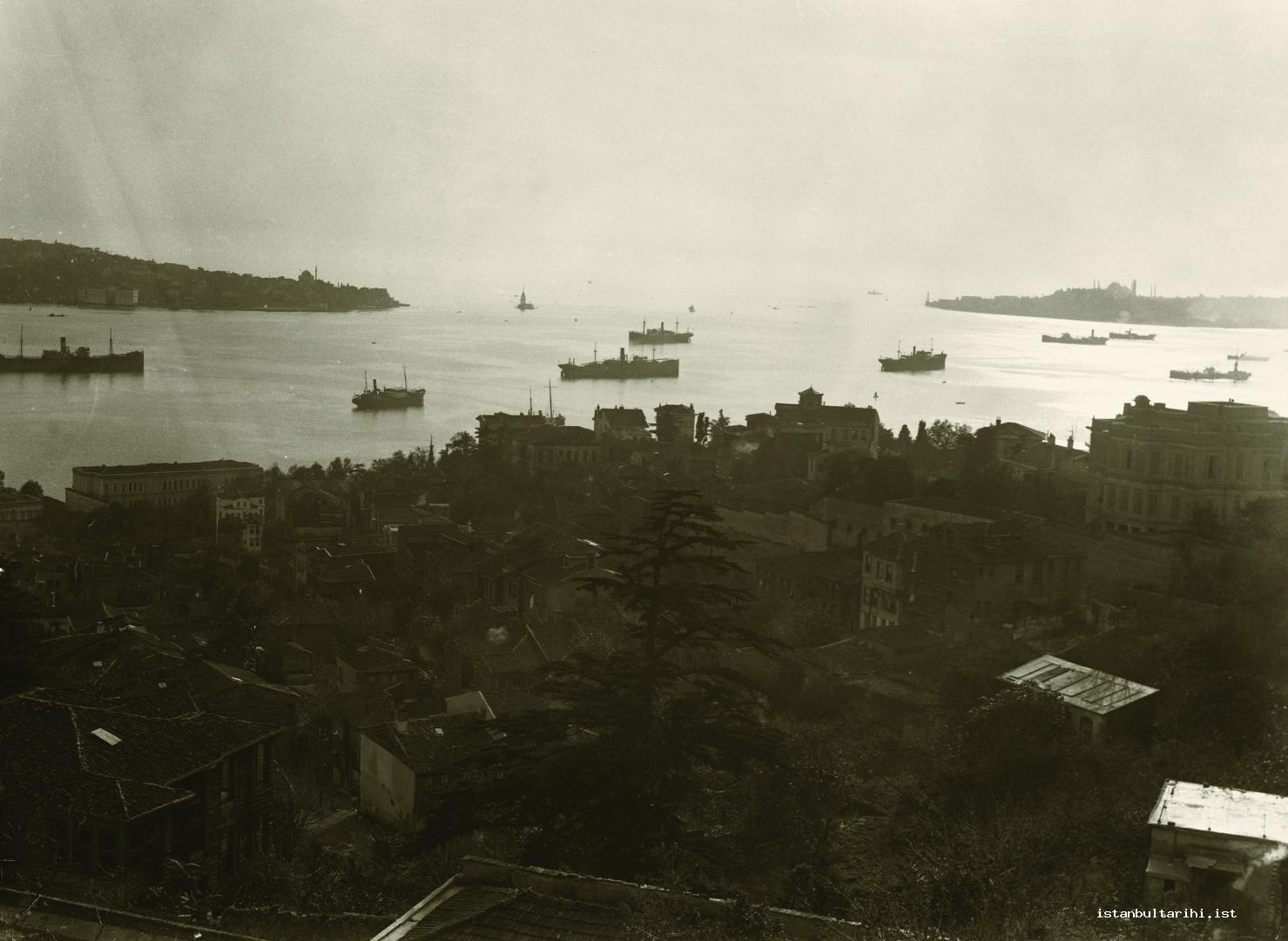
Indispensable adventures of our childhood…
Istanbul consisted of only Fatih and its neighborhood for me back those years. I was 10-11 years old and used to go to Saraçhanebaşı to buy magazines. There was a bakery on the piece of land, now there is a statue of Sultan Mehmed II there –unfortunately it is a poor statue-, next to the Fatih Park and a coffee house next to the bakery. The owner of the coffee house was from Siirt.
That’s, your fellow citizen.
Yes, my fellow citizen. We used to call him “Ammo Askar”; that’s, uncle soldier. Again one of our fellow citizens from Siirt, Brother Mehmet used to have a newspaper counter in front of the bakery. I used to buy the magazines there; Çocuk Gözü, Çocuk Haftası, Binbir Roman (Eye of the Child, Week of the Child, A Thousand and One Novels)… Therefore, my whole perception of Fatih and Istanbul was only Fenerci Hüseyin Dead-end (Lantern Seller Hüseyin Dead-End), Fatih Park, Fatih Mosque and the newspaper seller Brother Mehmet’s newspaper counter at Saraçhanebaşı back those years.
Fenerci Hüseyin Dead-End (Lantern Seller Hüseyin Dead-End)… What a beautiful name! Who knows who this Lantern Seller Hüseyin was?
Most of those dearest street names in Istanbul are magical, mysterious and poetic. When I noticed the Eski Çiçekçi Street (Old Florist Street) between Tunnel and Galatasaray while I was trying to explore Beyoğlu during my early youth, I remember thinking “What a poetic street name this is!”. Then I discovered the Karyağdı Street (Snowfell Street) in Eyüp. You know that there is a Çilek Street (Strawberry Street) in the “Öyle Bir Hikaye” (Such a Story) by Sait Faik. I hunted for this street and found it at the end. It was at Kuşdili (Birdtongue)… I did find the Ağaççileği Street (Raspberry Street) again mentioned by Sait Faik.
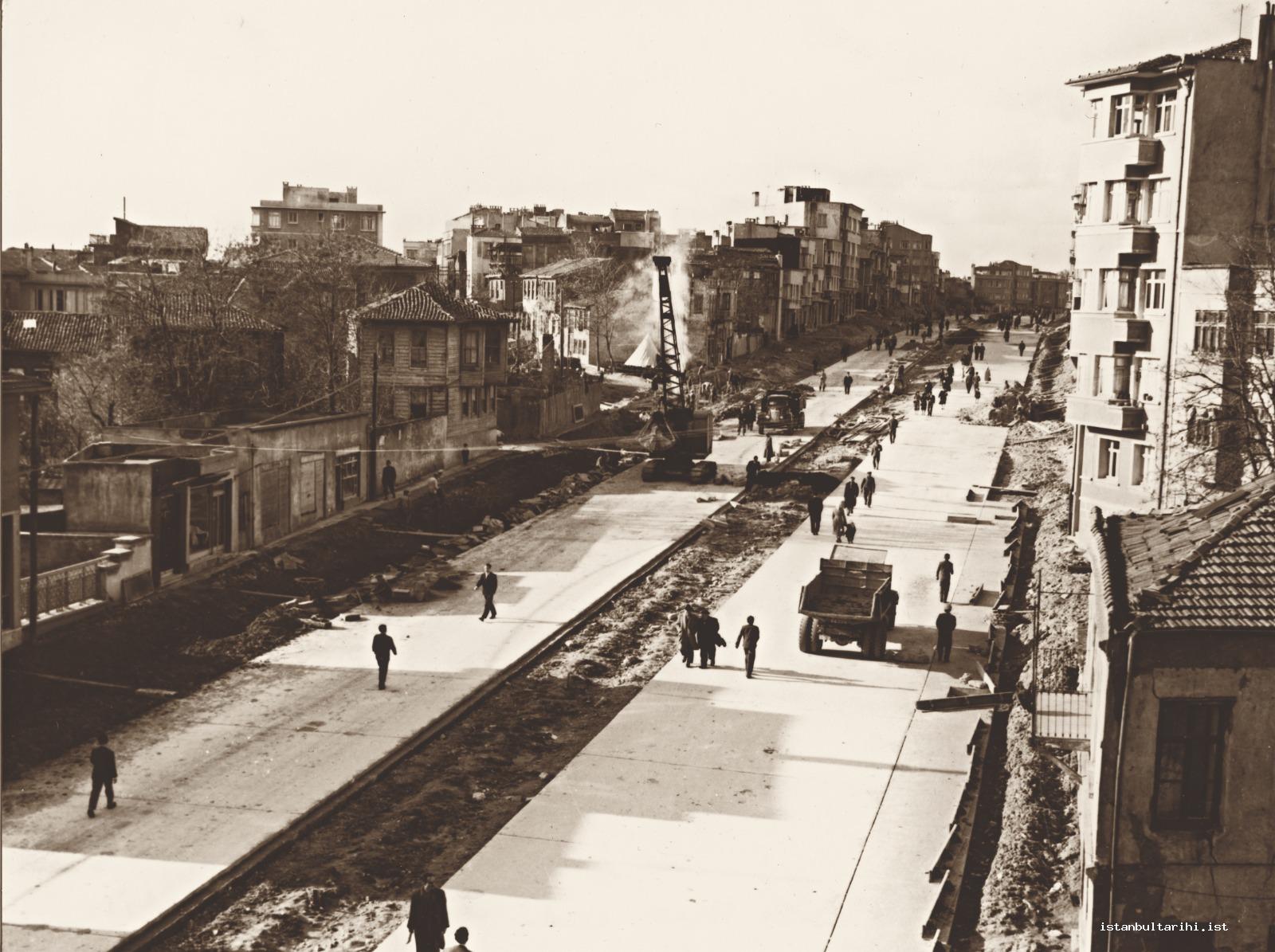
Whenever they change these streets’ names, I get very vexed. Well, is Fenerci Hüseyin Dead-End (Lantern Seller Hüseyin Dead-End) still there?
Fenerci Hüseyin Dead –End was there in 1989. That is to say, Aktüel magazine had an interview with me. My book called Istanbul’u Dinliyorum (I Listen to Istanbul) was published those days. We wandered around the streets of Istanbul from my childhood thanks to this interview. Fenerci Hüseyin Dead-End was there in 1989.1 Then my father was appointed to the Terme district of Samsun. We stayed at Terme for two years. I went to the secondary school in Çarşamba. It is a long story, I’ll pass that. Then my father retired when he was appointed to Şebinkarahisar in 1950. And we returned to Siirt, fatherland. I completed secondary school in Siirt but there was not a high school there. The closest high school was in Diyarbakır. I needed to go either to Diyarbakır, or to Istanbul… I was the only child of the family, a child who was raised with utmost care; therefore they could not entrust me somewhere easily, they wanted to have a good school. There was a hesitation about whether to go to Diyarbakır or Istanbul for a while. A distant son-in-law of the family, Brother Faik, was a graduate of Kabataş High school. A meeting was held; they were discussing “Where would this child go?” and so on… At the end, through the intervention by Brother Faik, they decided to enrol me to Kabataş Boys’ High school and we, the whole family, moved to Istanbul…
Where did you settle?
Initially again at the cousins of my father temporarily…
That wooden house…
No, they moved from that wooden house and now moved to the house numbered 1 at the Meyvalı Bostan Street (Fruit-laden Garden Street) next to this Şebsefa Mosque in Zeyrek. A big wooden structure; not a “teeny-tiny” one like the one at Fenerci Hüseyin Dead End; a mansion with quite beautiful, spacious and airy rooms… That’s a house I remember very well. That Meyvalı Bostan Street (Fruit-laden Garden Street) does not exist today… As you know, now that area has become Istanbul Furnishing Market. We stayed there until a house was rented. Boarding high school studentship -weekly boarder- at Kabataş started on the September of 1950. There was a downhill through Küçük Pazar (Small Market) from this house to Eminönü; I used to go down that road on early Sunday evenings (I had to be at the school on Sunday evenings since I was a boarder), get to Eminönü, get on the Bebek-Eminönü tram and get off at the station before Ortaköy, the station of our high school. I remember this road very well, because I was very curious about what is written all around. I used to read all plaques, signboards and so on throughout the road.
It must be like a picture before your eyes right now.
Yes, it is like a picture before my eyes. I have even told about some of those in one of my articles recently. For example, I remember the plaque of a lawyer called Volf Çernis at the entrance of this big business centre where Halk Bank is located today. Then right next to it the plaque of a waistcoat seller, “Waistcoat Seller Mordo”… A little ahead of it, entering Necatibey Street, a wine manufacturer on the left: “Wine Seller Diamandi Dimenksis”. By the way, -if my memory is not misleading me, which might be the case as well- on the right, just turning from Karaköy to Necatibey Street there was a “Karaköy Pastry Shop”, it used to sell marvellous pies and buns. Once in a while, when we were going to school with my father or when he took me from the school, we used to get to Karaköy, stop by that pastry shop and buy warm buns. I cannot forget that taste even today. There was a baklava shop right next to the Karaköy Pastry Shop, Gaziantep baklava Shop… I might be wrong but its name was Hacıtahiroğlu, I remember it. And of course, on Saturday afternoons and Sundays, when I was able to wander around on my own, Babıali Slope…
What do you remember from there? I mean from the Ankara Street that journalists used to call “Our Slope” once?
Our slope… Let me tell at once. We are going upwards from Sirkeci: as far as I remember, Semih Lütfi Bookstore was the first on the right. It had two showcases, an entrance door in the middle of those and the books published by Semih Lütfi Publications. I remember the books as well: particularly the books by Refik Halit Karay… The first book I bought there, if I am not wrong, was the book called Ay Peşinde (In pursuit of the Moon) by Refik Halit Karay. Then I haunted that bookstore. The first books I bought include Toprak Kokusu (Smell of Earth) by Reşat Enis and many more. Semih Lütfi Bookstore had a manager who looked quite scary and whom I called “Madam”.
I saw that woman in 1970s, I remember her too.
Really? Interesting…This woman made me feel discouraged all the time. I mean, something like “Why did you come, what is it that you are gonna do? Come on, do your thing and get going!” and so on… I remember asking for some books in an intimidated and hesitant way. I used to think that this woman did not particularly give much credit to the young readers. After all, she used to look sleepy all the time. We continue going upward: after Semih Lütfi -although I missed that- there used to be a small bookstore of Burhan Arpat and Salah Birsel somewhere on the right… The next thing I remember is Remzi. Publications of Ministry of National Education and Remzi…
So was Remzi then at the same place where it is located today?
Yes, at the current place. But there was the bookstore where the publications of Ministry of National Education were sold before Remzi. Hilmi Bookstore was just across Remzi, on the left of the road going upwards. İbrahim Hilmi Çığıraçan… Hilmi Bookstore meant Hüseyin Rahmi Gürpınar for me. As you know, Hüseyin Rahmi’s all books were published by İbrahim Hilmi. And of course İnkilap Bookstore next to Remzi… Mister Remzi used to stand at the counter generally. Of course he always had an assistant or an apprentice, but Mister Remzi dealt with the customers in person. He also had an attitude as if he did not want to get too familiar with the customers, like the madam at Semih Lütfi. I mean, I do not know why but I remember being a little bit timid and hesitant while shopping at Remzi…
Did you use to stop by Meserret (Joy) Coffee House? It is told to be at the point where Ankara Street and Ebussuud Street intersect.
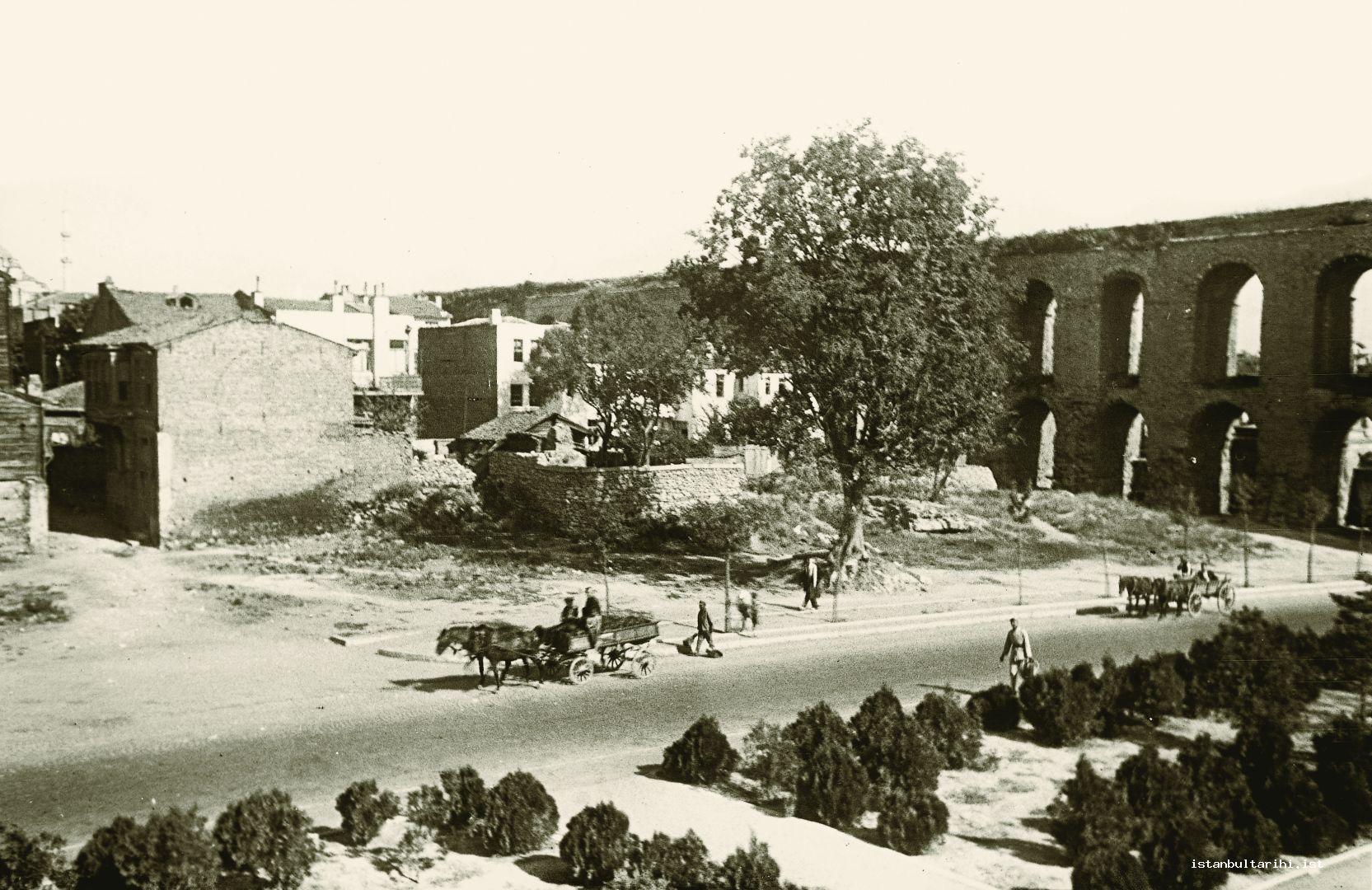
No, I did not used to stop by Meserret, I used to pass by it. Meanwhile, let me add something else. There is 4th Vakıf Han right across Hacıbekir while going to Sirkeci from Eminönü. There used to be Borsa Coffee House under it. Once in a while, my father used to meet me at Borsa Coffee House when I got off the school on Saturdays. Borsa was a coffee house of the regulars who used to sit behind a large glass showcase just like Tokatlıyan. We used to stop by Hacıbekir after that point and buy some candies. When we were going up with the tram, there was Emin Mahir Efendi Restaurant right across Küllük (Ashtray) at the Beyazıt Square, I loved their doner kebap a lot and my deceased dad…
That is you made it at Emin Mahir Efendi Restaurant? Can you describe it a little bit?
That’s to say, just on the right of the entrance of Beyazıt Mosque, not the side of the university, the other side.
On the side that faces Ordu Street.
Yes. Not exactly on the side that faces Ordu Street, on the side facing Beyazıt. Of course I do not need to tell the big pond, etc. at the square. When you enter there is a narrow road, a road with trees: the right of this road was Emin Mahir Efendi Restaurant and the left was Küllük. We did not sit at Küllük. I suppose once we went there with my father and drank coffee. Actually my father used to drink coffee and me a soda or something… I also remember my father telling me something like “Look son, enlightened people come to this coffee house; those people chat among themselves here. I mean, this coffee house has that kind of a reputation.” Of course he did not say who those people were. Probably he thought that I would not possibly know them. I only remember he said “enlightened people”.
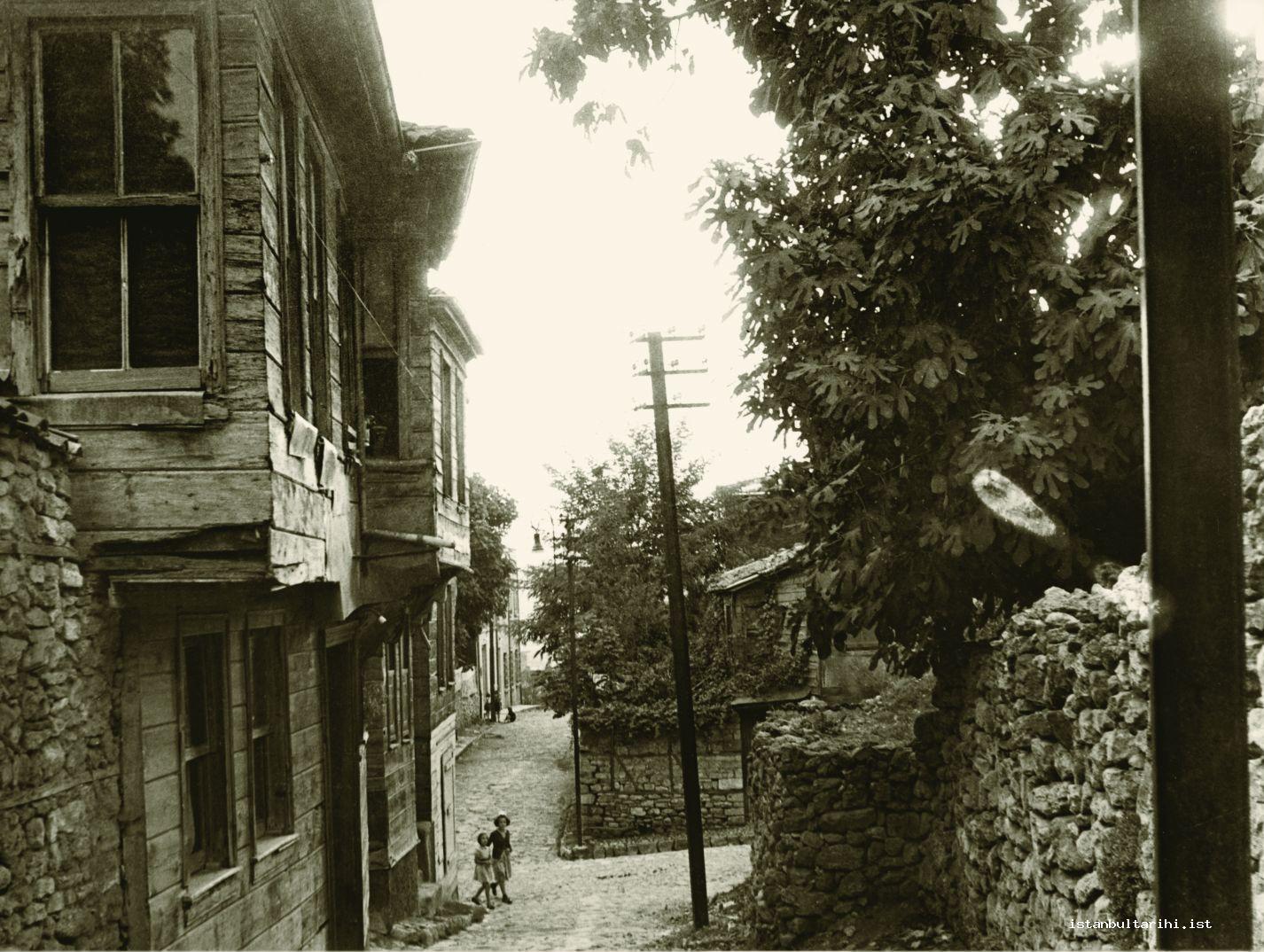
We were talking about the mansion at Meyvalı Bostan Street (Fruit-laden Garden Street). How long did you stay there?
Not too long, we stayed there for a short period. Then we rented an apartment at Kıztaşı (The Column of Marcian). We lived there from 1950 to 1958. We lived there during my high school, first and second years of university and the majority of my life as a journalist.
Kıztaşı should occupy an important place in your recollections, in your memory.
Sure. We were delighted by our walks from Kıztaşı to Sarıgüzel (Yellowbeauty), wanders at the by-streets of Fatih in the evenings, turns at the entrance of each street as if we were heading into a mysterious and giant adventure. One of the figures of Fatih’s streets that I cannot forget was Süpürgeci Ali (Broom Seller Ali); he used to wander from one street to another with the brooms on this back and a sufic smile on his face. I came up with Ali later at the Acem’s Coffee House (Persian’s Coffee House) at Kıztaşı. I penned Süpürgeci Ali and what I experienced that day in my essay titled “A Mythology of the Broom”. The window of my bedroom and study in our flat at Kıztaşı used to face directly Kıztaşı. Coincidences are interesting in my life… Once we stopped by the apartment of the editor of Timaş Publishing due to an occasion. That building where my eight or nine years had passed was demolished. [Its name was Çiner Apartment. Çiner Apartment, Floor. 2, No. 5... I remember the address very well because I gave that address at the A Magazine as the address of executive office. It also has a separate and interesting story. Some letters arrive at home. My father says “That person does not live here. A Magazine or something… Of course my father does not know the situation, I tell him later]. I was talking about Ms Emine. I told her, “Hey, this is where we used to live.” Our apartment was demolished and Ms Emine was living on the second floor of the apartment built in its place. What a coincidence! This is the first one… The second coincidence is that: there used to be a wooden house in the place of the apartment where I lived in Valideçeşme when I got married for the second time and guess what, that house used to be the rental house where Professor Behçet used to live before he moved to Camgöz (Glasseye) Street?!
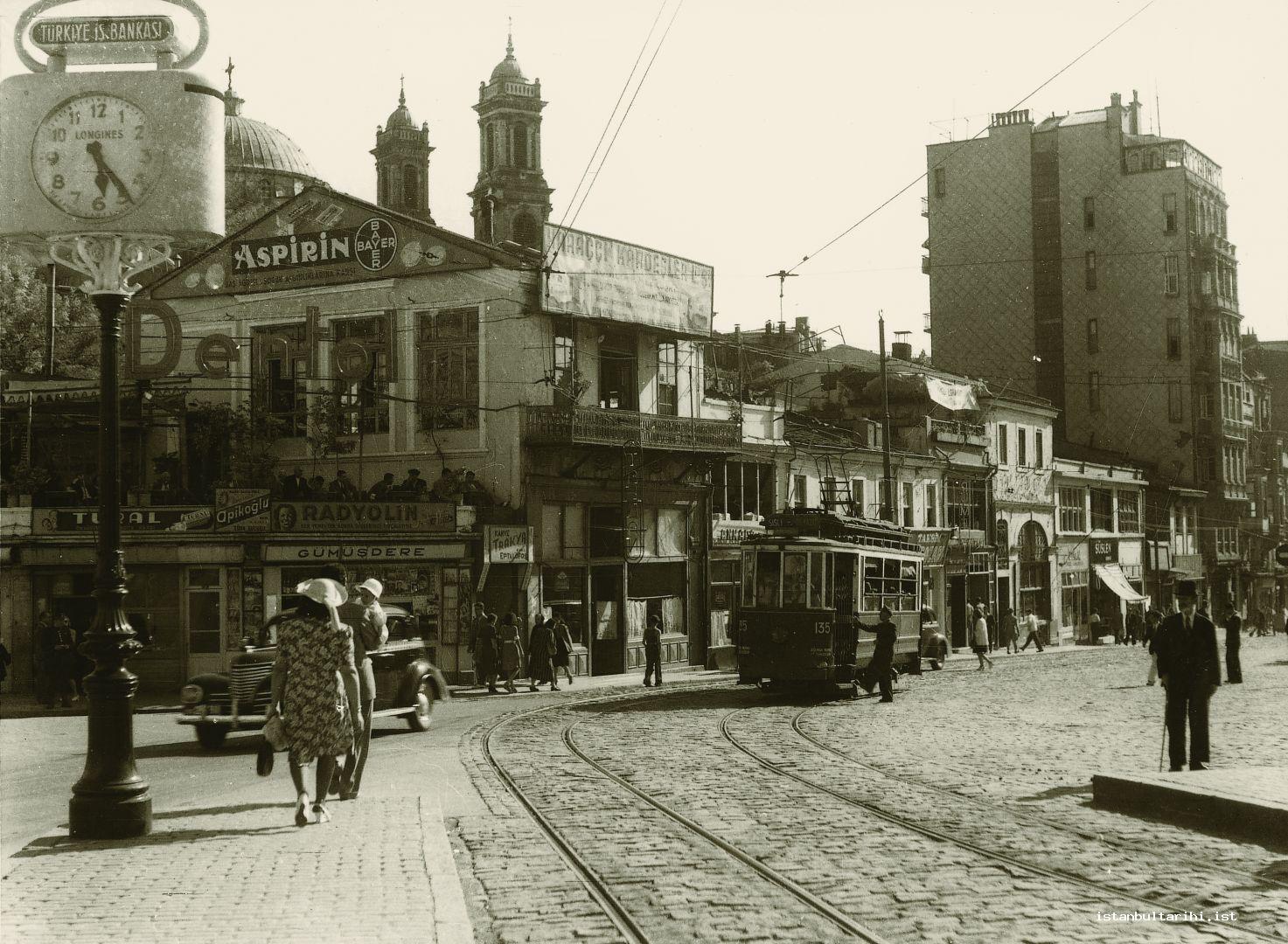
Behçet Necatigil’s…
Yes. One evening Professor Behçet was my guest for dinner and he was quite surprised. Just as I was when I saw the apartment where Ms Emine lived…
And Kıztaşı (The Column of Marcian)?
There was a tax office on the left towards the Kıztaşı. If you like, let me talk about the people I knew from Fatih. I’ve already talked about newspaper seller Brother Mehmet. Brother Mehmet’s son, Hakkı, had a kiosk built between Fatih Park and the bakery and was selling newspapers there. We used to meet there in the evenings during my university years. One of Hakkı’s friends was İslam Çupi, renowned sports writer… We had a very intimate friendship. He was Albanian; his father was the aide to the King Zogu of Albania. There was a photograph of King Zogu and İslam’s father in military uniform on the wall of their living room. I remember İslam; Baba Yavuz [Türkoğlu], the basketball player; Oktay Kavrakoğlu; İslam’s friend Cüneyt… Then my friends from the 4th grade of the primary school, Metin Altıparmak and so on… I do not remember a lot about Kıztaşı to be honest.
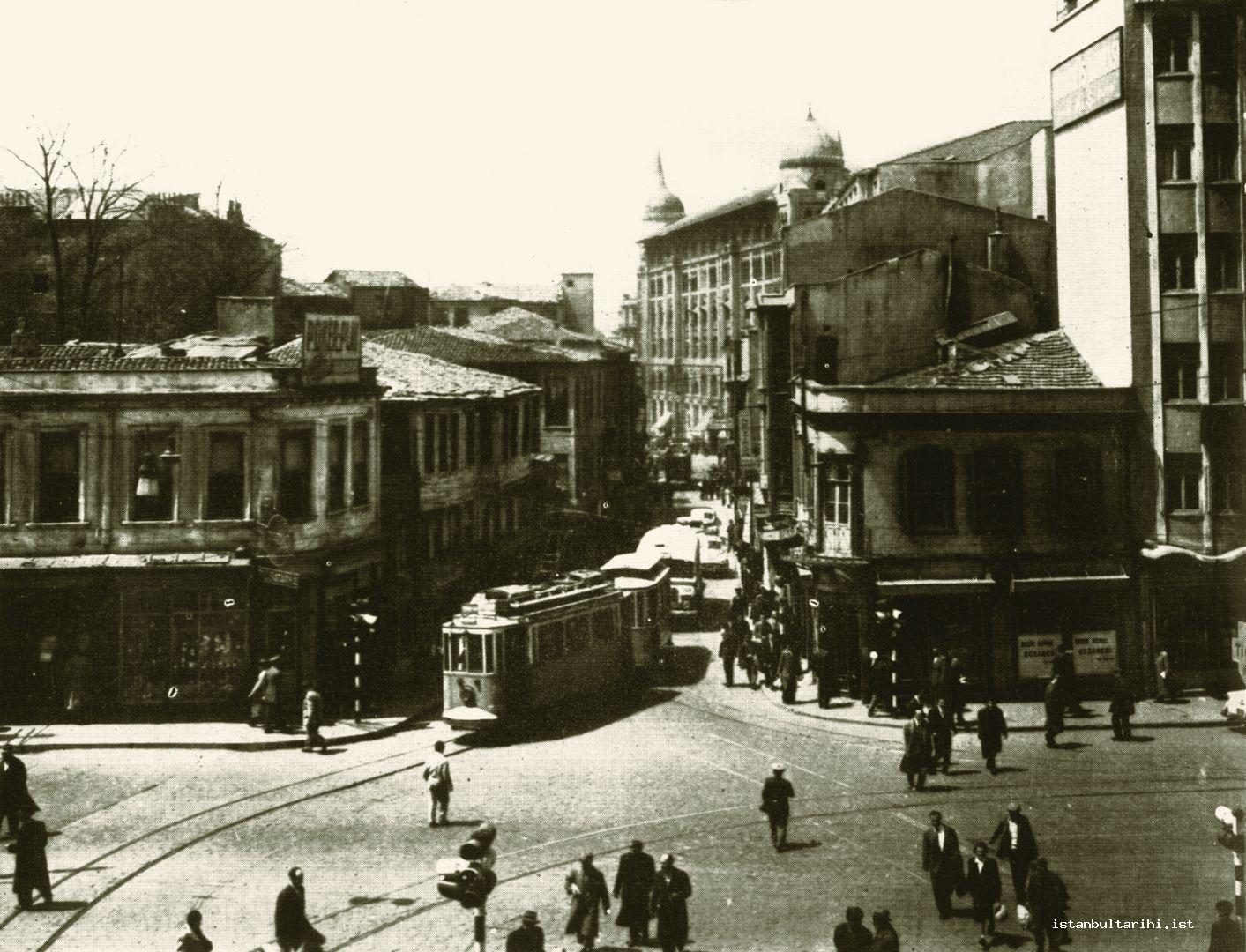
As far as I know, you wrote about that column in Hüzün ve Ben (Melancholy and Me).
It was about its history. And also something about our loves…
You are a graduate of Kabataş High school. Therefore, Kabataş, Beşiktaş and Ortaköy were your living space for three or four years.
Actually, as you know, the building of Kabataş Boys’ High school is a seaside palace.
Of course I know! Feriye Palace where Sultan Abdülaziz was imprisoned after being dethroned and then where he was murdered or committed suicide…
Seaside palace, yes, but it meant for us thick and high walls; gigantic iron gates and Pala Yusuf Ağa keeping the gates. I do not forget that first day when I wandered around looking up its high ceilings of which the gilts came off. I felt like I was put in a jail. There were so many bans. In the first year, I was in one of the seaside classrooms which was small but had adorned ceilings. The wooden desks were so attached to each other that those sitting at the rear end had to step on the desks to go to the blackboard. Since the school was a seaside palace, I was able to wander on the banks in the mornings and evenings and also in the breaks during fine weathers of the beginning of spring or the early days of autumn. Our biggest joy was to cry out to the Bosphorus ferries passing by the school to make them greet the school, “Toot, Captain!”. All captains of the Bosphorus ferries used to start to toot their horns even before we asked for it.
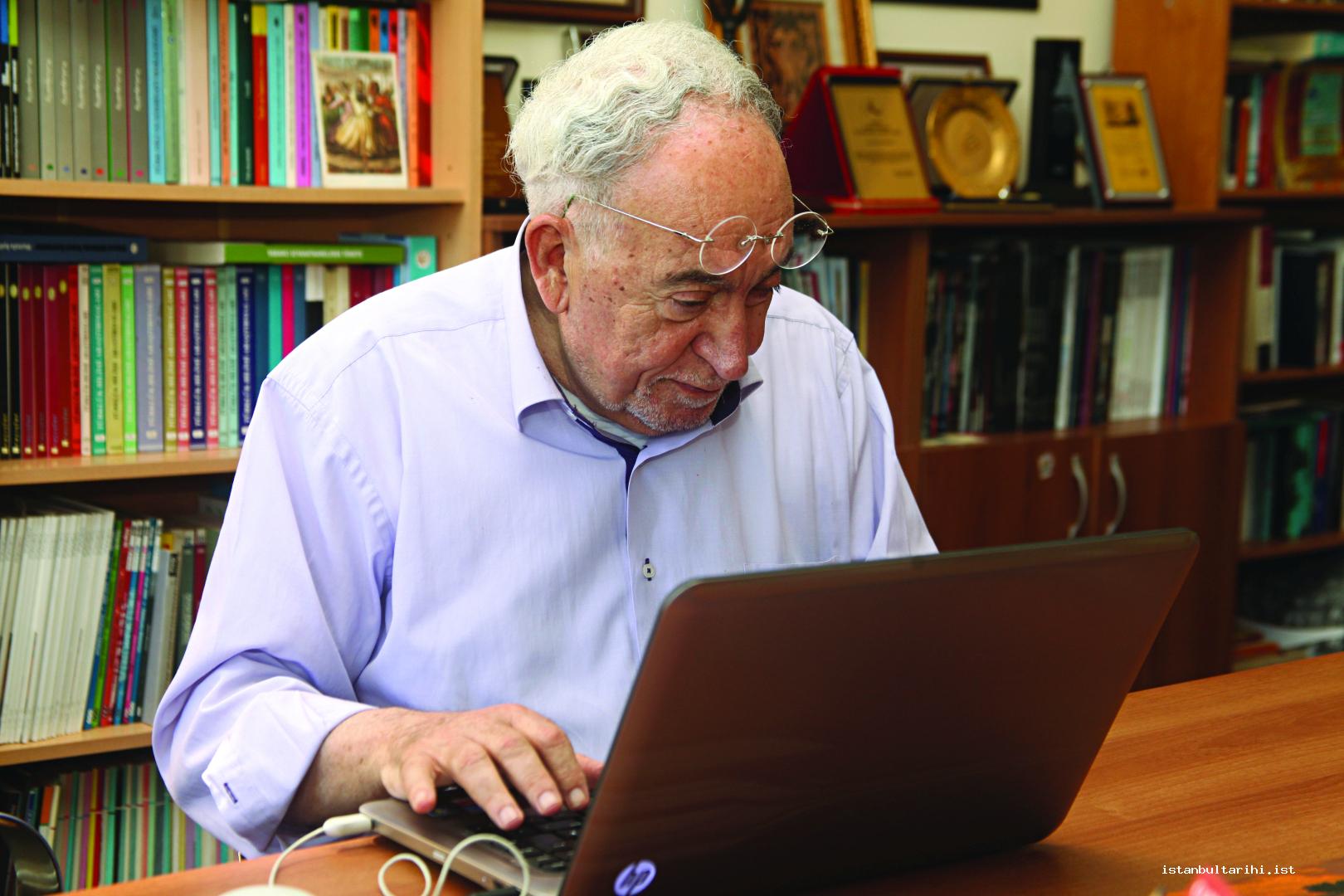
Necip Fazıl recounts a similar incident in one of his essays. The old captain of Şirket-i Hayriyye (Fortune Company) ferry number 63, his name was Tahsin, was being loved a lot at the end of 1930s. The children of Bosphorus used to run to the seaside when number 63 appeared in the distance and start to cry out “Long, long, long! Live, live, live! Captain Tahsin long long live!” Then Captain Tahsin used to toot the monstrous horn of the ferry for a long while.
Same here… How can they dare not to toot?! The whole shore wailed with the cries of “Toot, Captain!” This was our biggest joy. When we had a chance to leave the school early evenings, we usually used to go to Ortaköy and wander around Dereboyu. There was a coffee house on the left of the road ending by the shore at Ortaköy; we used to sit at that coffee house from time to time and watch our friends playing backgammon. I do not remember much else about Ortaköy. As I have already said, Kabataş Boys’ High school induced a feeling of imprisonment by its giant iron-railing gate facing Muallim Naci Street and by Pala Yusuf Ağa keeping this gate; and a feeling of freedom by its side facing the Bosphorus. Sea, ships and the verdant hills of İcadiye across the sea…
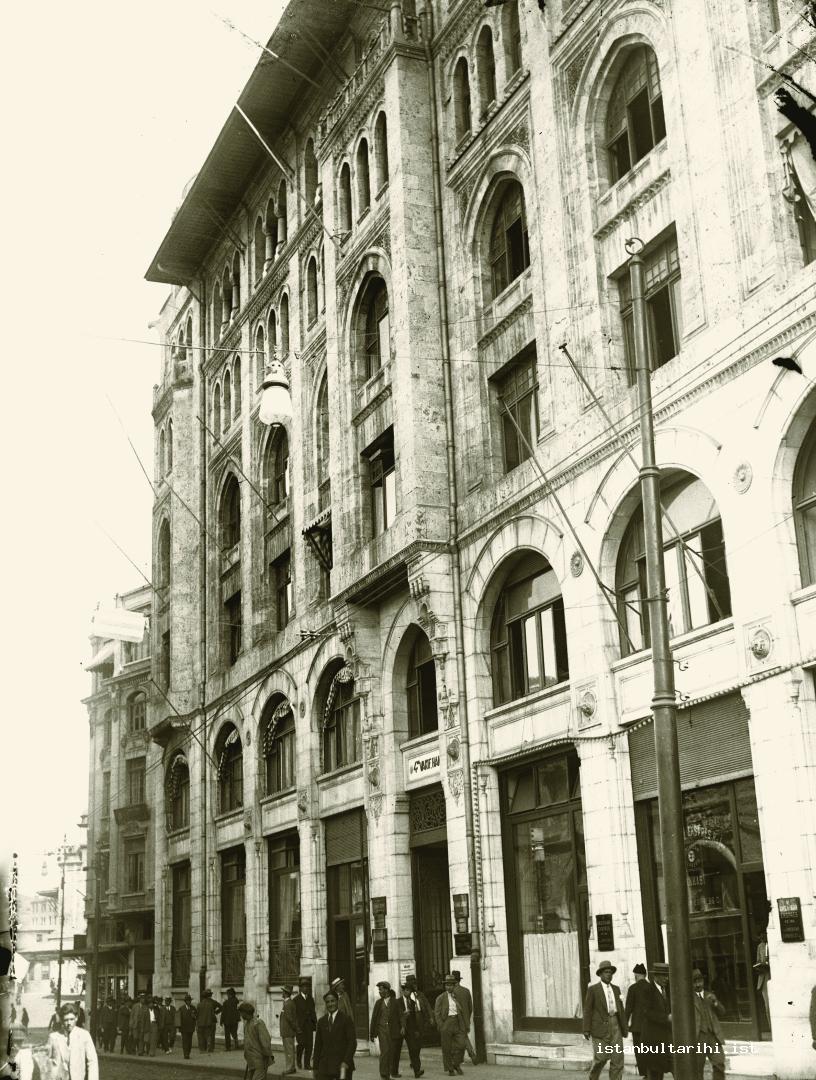
As far as I remember, there are trips you had with your father in Istanbul. For example, Master Hyacinth…
Oh, yes. Master Hyacinth, of course. Well, one day something like I’ll tell happened: while I was at 40th Primary School, it was probably in 1946, I was 10 years old and it must have been a holiday on summer. We used to do this kind of stuff. My father used to say, “Come on, we are going.” I could not ask “where are we going, why are we going?” We used to leave home and get on the tram. That day we got on the Topkapı tram from Aksaray and got off at somewhere close to Kocamustafapaşa. My father said “Isn’t there a florist around?” He was asking me. He had this kind of a habit. He used to talk to himself and ask questions as if he was in dialogue with someone. He looked around, we walked for a while; there was no florist. Then we entered a place. A big tree, probably a plane tree… Tranquillity…
Not plane tree, cypress tree…
Cypress tree… Bond with a chain.
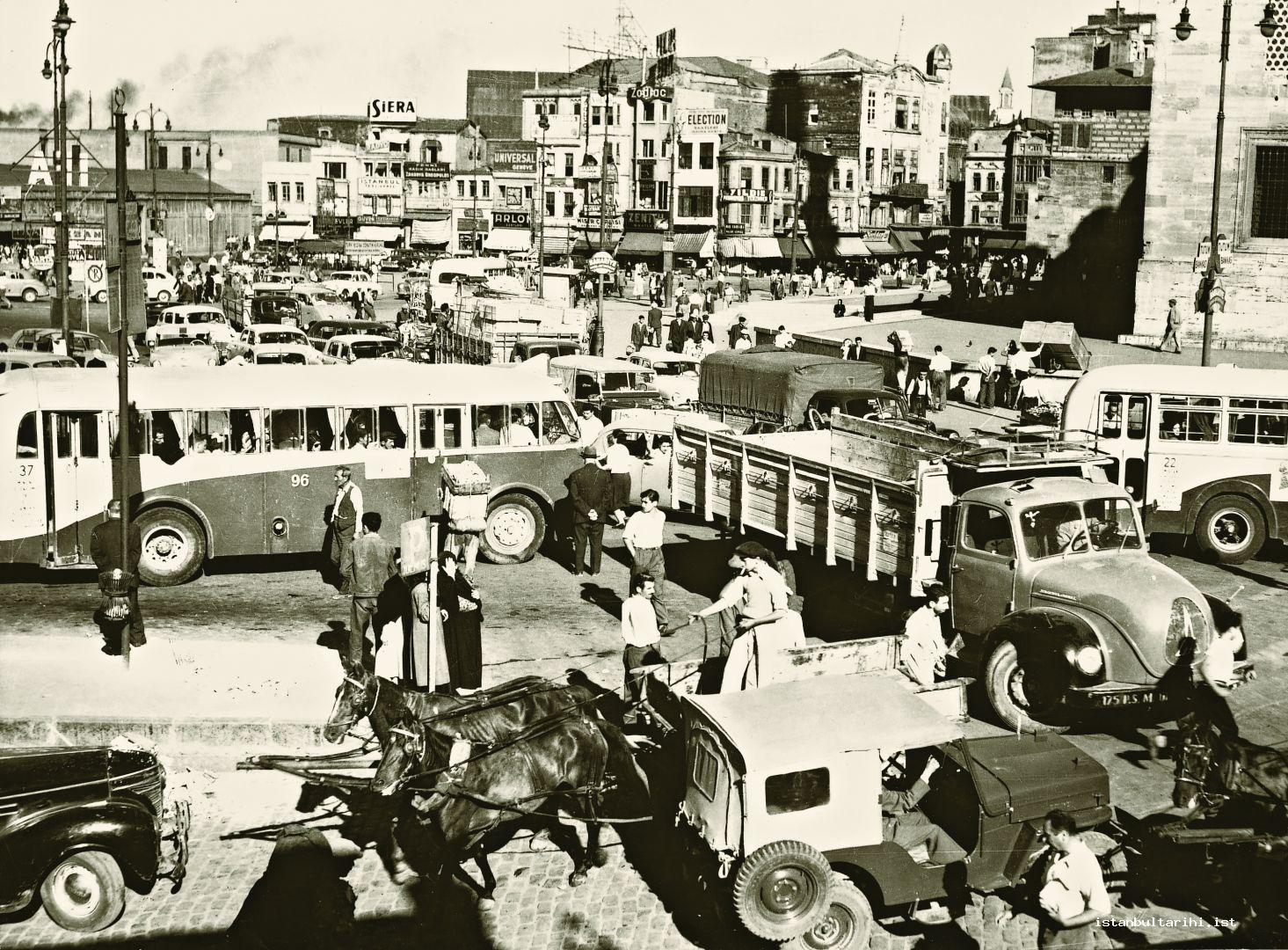
Ahmet Hamdi Tanpınar also calls it plane tree in his Huzur (Peace) novel.
Yes, he calls it plane tree as well. I must be mistaken because of Tanpınar. However, we did not know why there was a chain binding the tree. Then my father asked, “Son, can you hear the affection of Allah?” Then there was a smell… I do not know whether this is some psychic thing occurring through self-inculcation but suddenly I felt a dense flower smell covering there, that place and I felt strange, I trembled. Like “What is going on?” or something. He talked about Master Hyacinth briefly. He said, “This is the tomb of Master Hyacinth”, we prayed and so on… We left that place but I was somewhat bewildered. It was striking! Then my father said, “I was looking for a hyacinth…” and so on. Whenever I remember it, I still tingle.
It must be the origin of the poem “Hyacinth and Well”.
Yes, it is…
Where else did you use to wander around like this?..
Again in 1946 when I was in Istanbul, renowned Missouri ship came to Istanbul.
Probably it was when it brought our Washington ambassador Mr Münir Ertegün’s coffin, right?
Of course back then I do not remember that it brought Münir Ertegün’s coffin. Even if my father had told me about it, I did not record it in my memory. Everybody is there since “It is a magnificent ship, an unprecedented armoured ship!” and so on. We went to see it as well. My mother was curious about it too. That is an urban legend of Missouri that was spread around Istanbul. Folks flowed to Dolmabahçe in crowds and watched it. I suppose Americans let the Istanbulites to visit the ship for a few times but we did not do that. We solely amused ourselves from a distance. My deceased dad said, “We went up to there for nothing. It is only a ship what we had seen.” and so on, and complained of me and my mother a little bit since we said “We insist to see!” I have another story apart from these; I have to tell you about it too. I have written this story for a few times as well. There was a Mimar Ayas Ağa Mosque at Saraçhanebaşı right across Brother Mehmet and the bakery. Architect Master Ayas was the chief architect of Mehmed the Conqueror. And Mimar Ayas Ağa Mosque was the first Muslim structure (in terms of religious architecture) in Istanbul. It was on the agenda to open the road and therefore to demolish the mosque at the end of 1950s when the interest to reconstruct Istanbul was started, so-called public works “move” by Adnan Menderes. Municipality building or so was not there yet. It was all houses and shops. My father was a very sensitive person in this regard. I do not know how, but they met with İbrahim Hakkı Konyalı and initiated a civil action to prevent the demolition of Mimar Ayas Ağa Mosque. I heard this story from my father later. It’s interesting that they went to Ankara with İbrahim Hakkı Konyalı all of a sudden. Director General of Foundations was Orhan Çaplı back then... I remember that. He pledged my father and Konyalı and said “Don’t worry. We will open the road but we will carry the mosque as it is from there to downwards, towards Aksaray, somewhere within Horhor. You do not need to worry at all. It will not be demolished, it will only be relocated!” I remember clearly, it must be 1955... My father arrived home in high spirits feeling “we did it”. One morning we woke up to the view that Mimar Ayas Ağa Mosque was razed to the ground. As you know, one of the professors of Istanbul State Arts Academy, Mr. Behçet Ünsal put together a heart-breaking inventory of the old structures razed to the ground with the excuse of “public works” in Istanbul between 1950 and 1969.
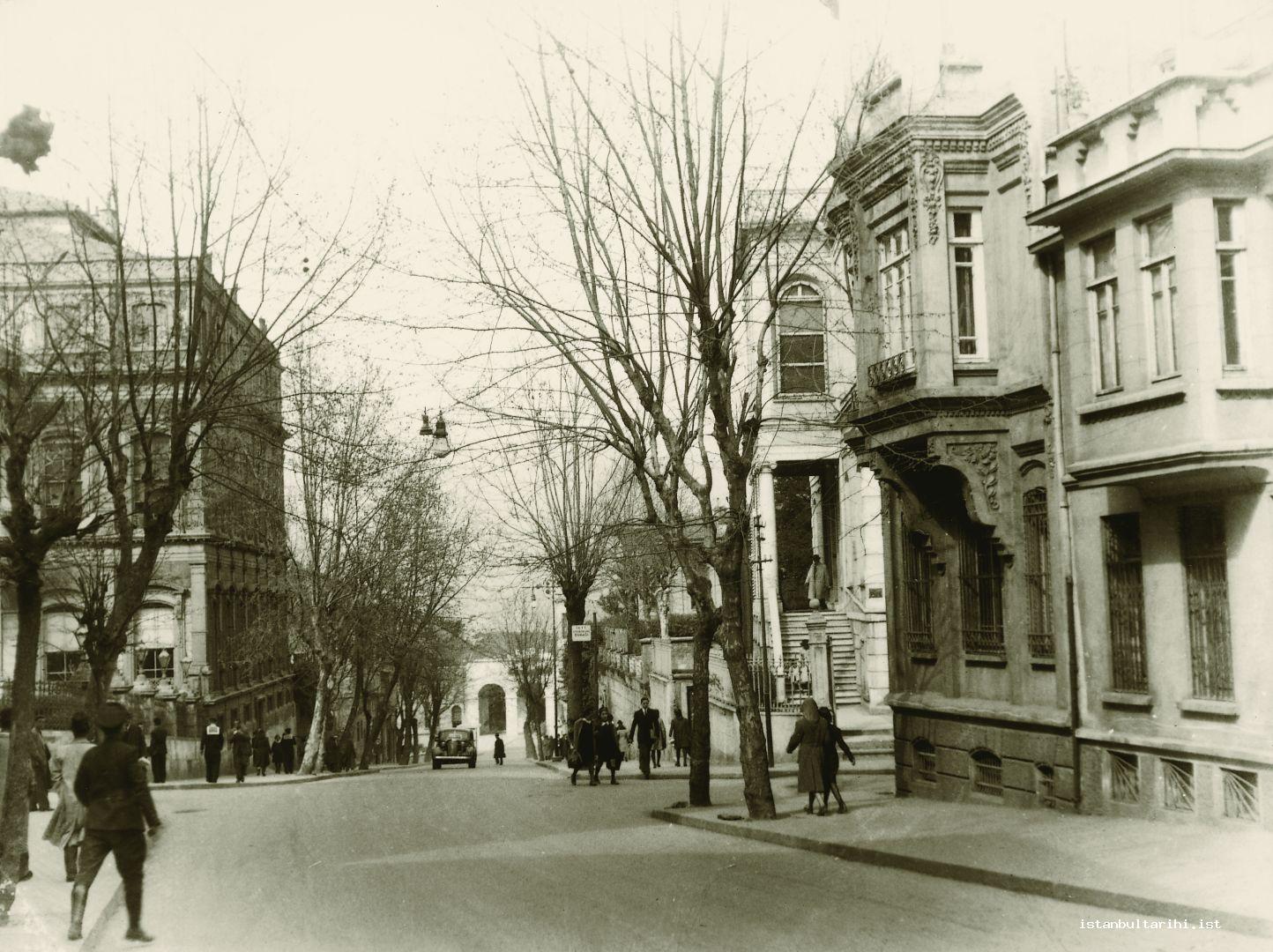
I know Mr. Behçet Ünsal’s article. I have a copy of it.
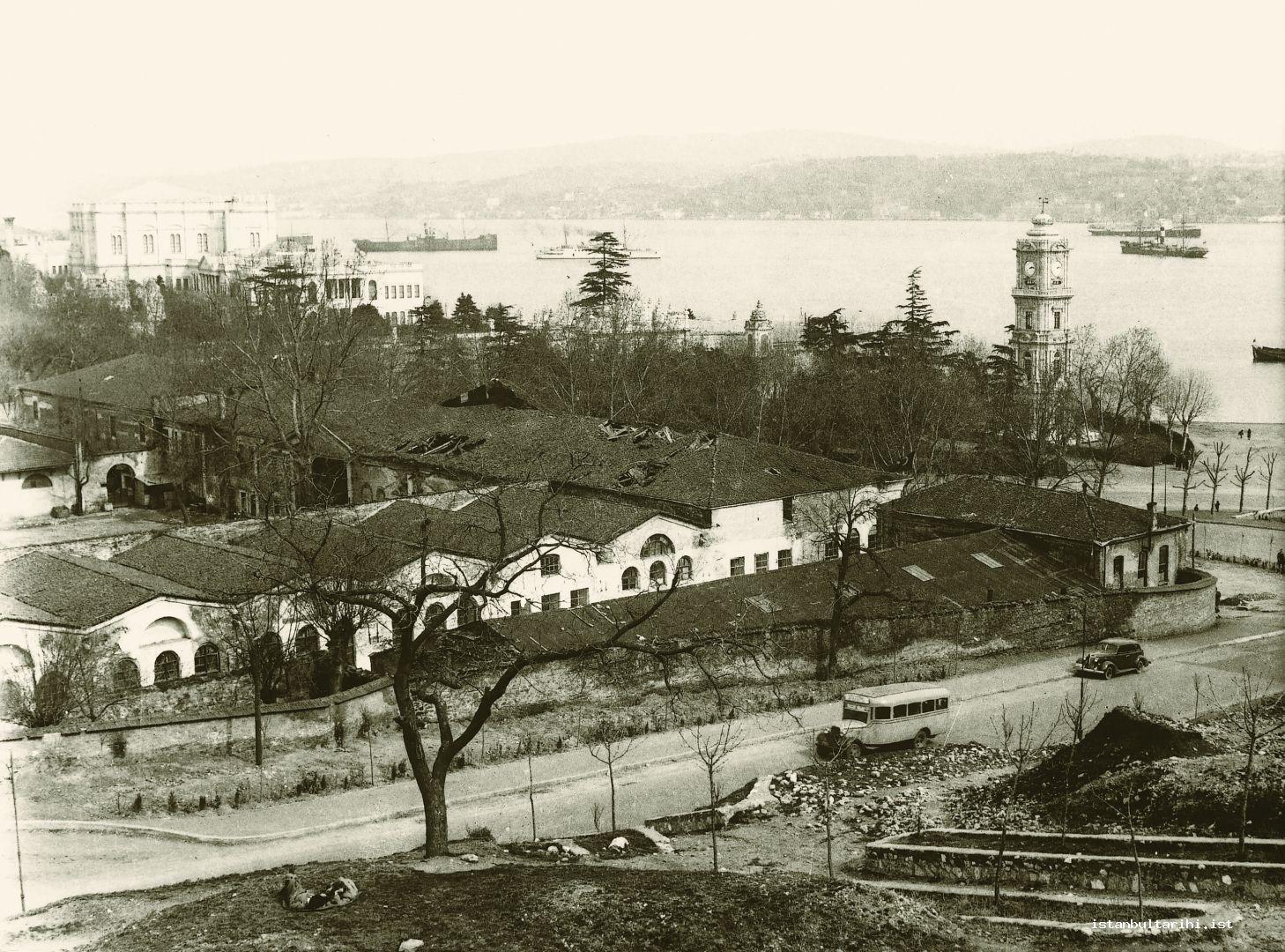
More than one hundred demolished historical artefacts are mentioned in this article. For example, Azapkapı Valide Mosque… Both Azapkapı Valide Mosque and Saliha Sultan Sıbyan Mektebi (Saliha Sultan Primary School) -it used to be called 48th Primary School in our childhood- facing the small area between Azapkapı and Perşembe (Thursday) Market were victims of “the mentality believing city planning and construction can be done by arbitrarily demolishing the old structures” as Professor Semavi Eyice puts forward! Professor Behçet Ünsal also recounts an incident he experienced personally: Sinan Paşa Hamam, belonged to Mimar Sinan at Beşiktaş was demolished at a venture because of a road issue again and by denying its worth. The demolition of Sinan Paşa Hamam resulted in extensive discussions within High Council of Immovable Heritage Items and Monuments in 1957; and it was objected by professors Celal Esad Arseven, Kemali Söylemezoğlu, Ali Saim Ülgen, Zeki Faik İzer and Behçet Ünsal. President Tahsin Öz insisted on the “worthlessness” of the structure and it was decided to be demolished by one more vote in favour of demolition. Professor Behçet Ünsal says “This incident will last as a wound for our history of law and architecture”. Süleyman Subaşı Mosque at Unkapanı was also demolished and it belonged to Mimar Sinan as well.
They demolished them thinking that “we have many of those”.
“We have many of those, let’s demolish away!”
You must remember the public works movements of those times very well.
I remember them very well. Because I was a journalist.
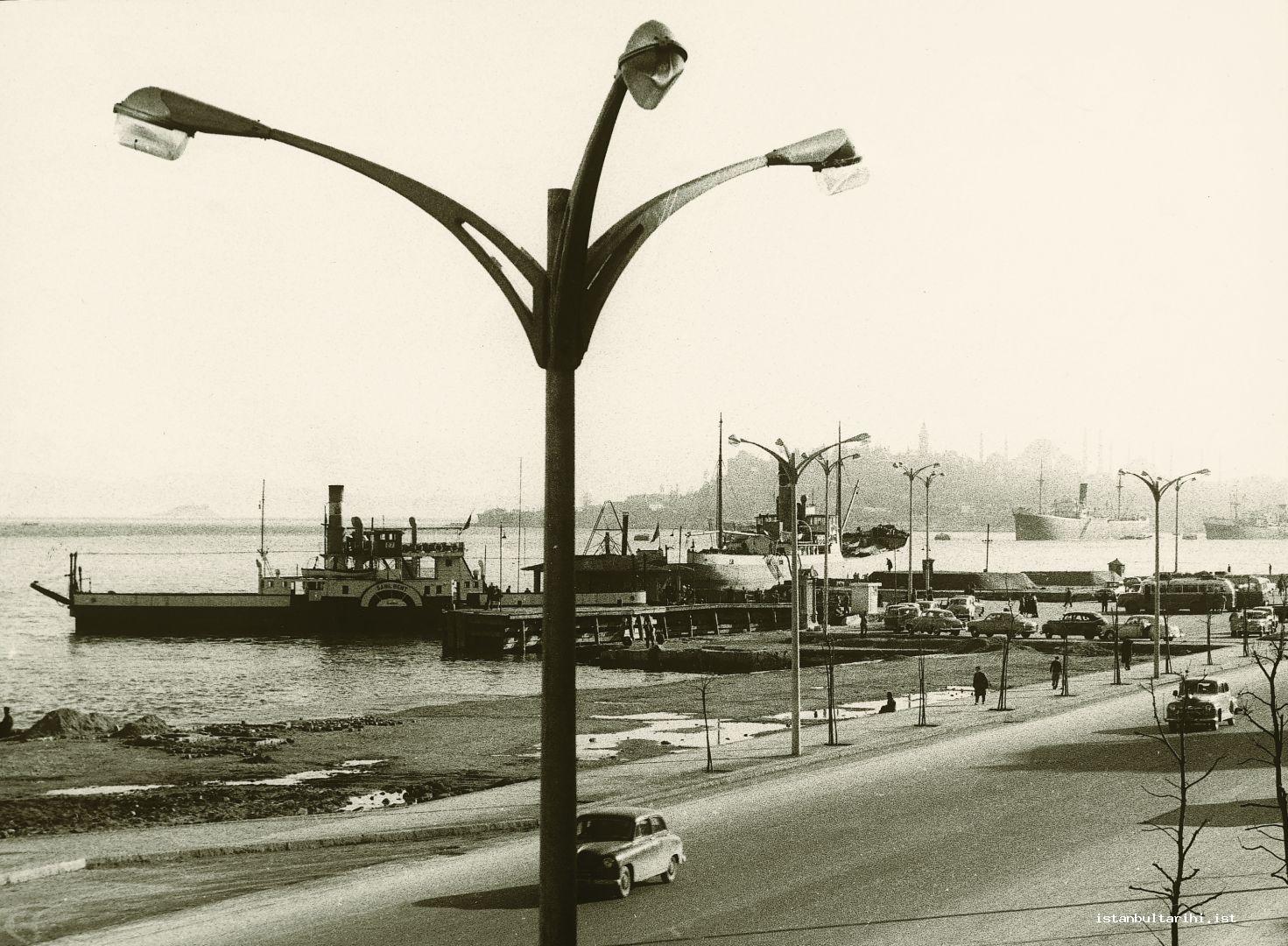
Can you tell a little bit about your feelings, impressions back then? What did you observe?
Let me tell: These incidents coincide with the years I worked as a journalist at Vatan in 1957-1958. They used to assign me to follow Menderes when he came to Istanbul back then. Prime Minister used to stay at Park Hotel. Mr. Muzaffer Ersü was his principal clerk. He would not speak; the briefings were delivered by his assistant Ambassador Mr. Şefik Fenmen. The line would connect to him and we would learn where and which public works were to be inspected by Sir -Prime Minister used to be called “Sir”- that day. The gravest demolitions I remember were actually at Fatih. That the complete demolition of the block on the left where the Municipal Palace is, including Mimar Ayas Ağa Mosque, at Fatih. Boulevard was already opened; I suppose it must be at the era of Lütfi Kırdar in 1948. However, what I saw was mostly limited to Fatih and its neighbourhood. The demolitions I witnessed in person were at Fatih and Beyazıt. However, Mr. Şefik used to say “Sir went to Emirgan today. He ordered the demolition of these and those blocks at Emirgan”. This was the case back then. The number of the places we saw as journalists was very few.
Did you used to cover these public works?
The news about public works used to turn out to be very ordinary news. Like, “Prime Minister Adnan Menderes visited public works fields here and there and gave necessary orders to the relevant parties”. That was all. The news would be on the front page since it covered Prime Minister but its content was of no account.
To tell the truth, there were not many persons seriously struggled against this destruction.
No, none at all.
I mean everybody was silent except a few intellectuals. The awareness of history and environment was not as developed as today.
No. However, I want to remind that, I wrote about this before, Mr. Rıfkı Melül Meriç intervened the demolition of one of the walls of Atikvalide Arcade at Üsküdar (that is during the disaster called “blind pick” by Yahya Kemal) saying “You cannot demolish it, it is a historical place”. Contracter complained of Professor Rıfkı Melül and the professor was seized and brought to the police station.
There were those struggled individually against the demolition of historical structures. However, the dominant mentality of the era could not understand why those “worn-out” structures should be preserved and accused those struggling in this regard for being reactionary. I suppose that Menderes acted in accordance with the idea that Istanbul was consciously neglected; that is, left to destruction, during the One-party Period...
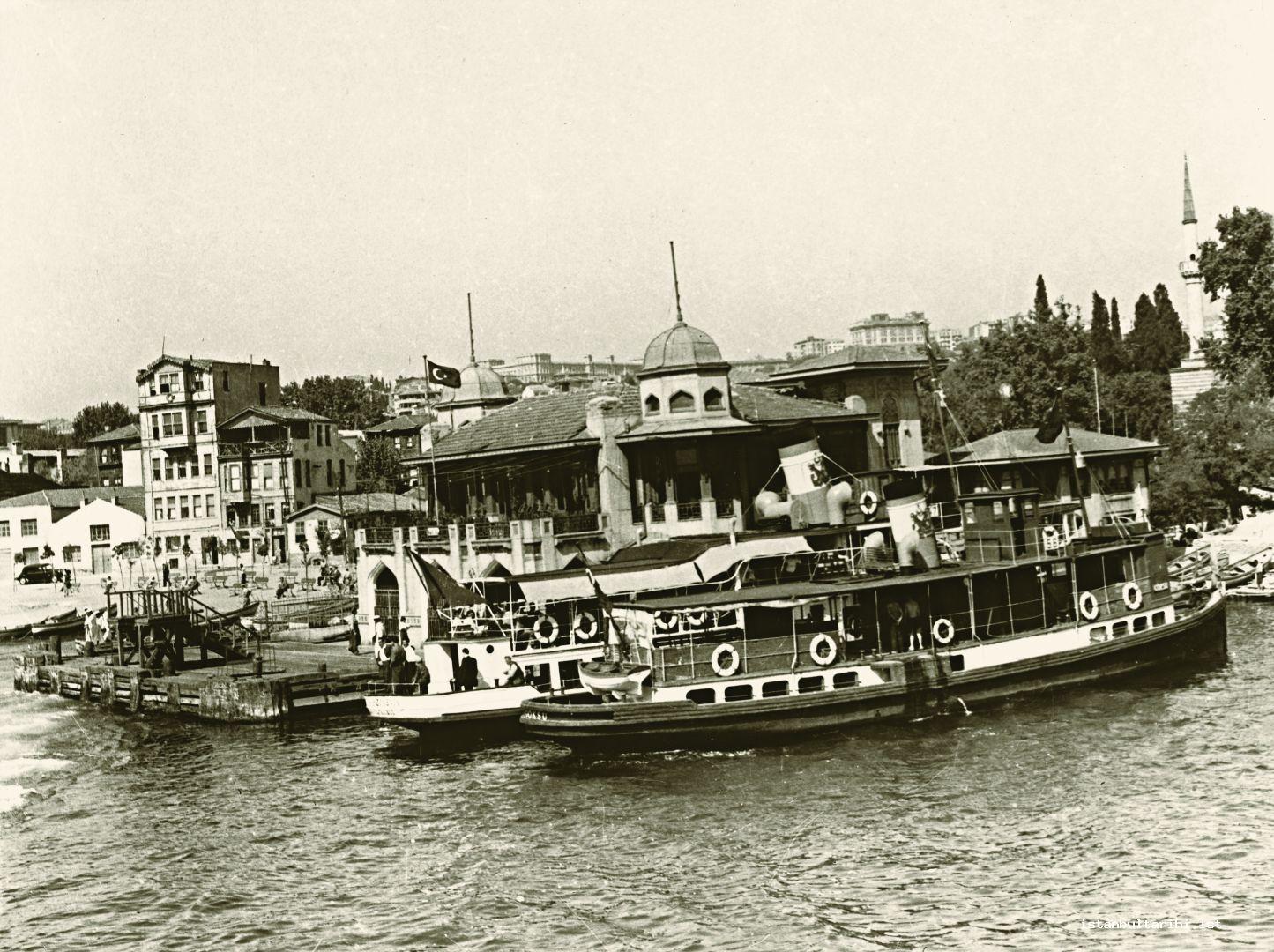
One more thing: As you also know very well, deceased Mr. Turgut Aysever had an evaluation; I guess he wrote about it at Arkitekt magazine as well. I listened this from him for a few times. He said that, “city planning professors of İTÜ (Istanbul Technical University) used to say ‘Dear Prime Minister, you are at a position to teach us city planning within three months’ when Menderes used to order demolition of this and that”. I reminded a famous couplet by Keçecizade İzzet Molla in one of my essays on this issue:
Meşhûrdur ki fısk ile olmaz cihan harâb
Eyler ânı müdâhene-i âlimân harâb
(Everybody knows that by disorder the world would not be destroyed
It is the flattery by scholars by that it would be destroyed)
It was certainly the case back then; that is, there was a “flattery by the scholars”. There was not any civil initiative against Menderes. Solely, as I said, very individual and small-scale initiatives like that of my father and İbrahim Hakkı Konyalı and a few persons like them...
It is thought that this destruction did only belong to Menderes era. Well, Taksim Military Barracks subject to conflicts lately was demolished in 1940. You would not believe how the most prominent intellectuals of the era struggled for the demolition of İbrahim Paşa Palace and the hamam of Beyazıt Complex in 1930s and 1940s. It looks like an assault by the intellectuals that regard the structures that are the legacy of Ottoman as worn-out works that prevent progress. İbrahim Paşa Palace, which is the single surviving vizier palace today, could be preserved partially thanks to the determined struggle of a few intellectuals. Court House, which has been evacuated recently, was built to the place of its demolished part.
Extremely correct statement. One hundred per cent it is correct...
Members of Democrat Party also come from Republican People’s Party. Same mentality.... Royal stables, Magnificent Theatre of Dolmabahçe were also demolished during One-party era.
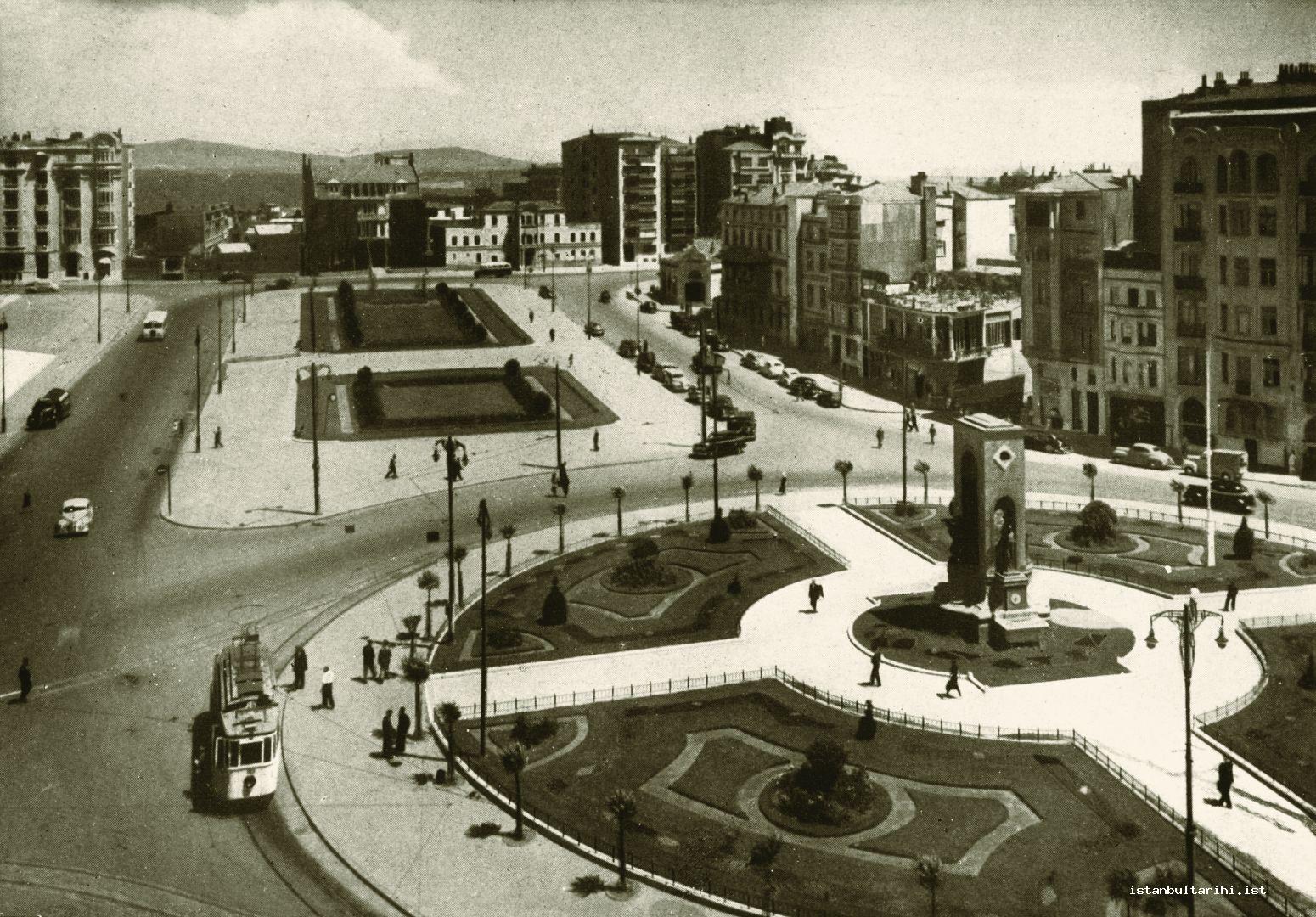
Prime Minister used to get to the sites of demolition with his 0093 plated black Cadillac, get briefed by whomever accompanied him -for example either Public Works director of the municipality or professors from İTÜ city planning department- and delivered orders to them.
In my opinion, Menderes’s approach was some kind of a playoff based on the idea that “you have neglected Istanbul, I am reconstructing it”. I suppose he could not dare to act like that if it was today.
No, certainly impossible. Certainly...
I remember very well, UNESCO announced 1975 Year of Architectural Heritage. These issues were started to be talked gradually since then. We understood that deceased Menderes caused a serious massacre while he thought he was reconstructing. I am sure that people living back then were perhaps happy, thinking “Finally we will get rid of this hovel stuff, these bedbug-laden houses!”
To tell the truth, that bedbug issue is very important. When we lived in wooden houses in Istanbul, my mother used to place a basin next to the bed and pour water into it. And she used to pick up bedbugs falling from the ceiling and throw them into the basin. When we got up in the morning, we used to find the water surface of that basin full of bedbugs. It was a serious matter.
I also lived in wooden houses throughout my childhood and early youth. There was DDT (dichlorodiphenyltrichloroethane) and so on. It must have been very difficult to live in wooden houses when there was no DDT. Anyway, let’s leave the bedbug issue a side and talk about the places you lived in Istanbul.
Now, there is something. What Istanbul means for me is completely limited with the places where I lived. That is, those places in Istanbul (not only in Istanbul; in Ankara or in any other city) which I do not know about or I did not live in or I do not hold any memory of do not mean anything to me. I mean, I think that city puts forward a situation existent through the experiences and memories within places (I think that it does not only make me feel like that, but also it is true for other people as well). Thus, for example, I remember Fatih as a place with the Fatih Street in 1950s or huge plane trees on both side of the Macar Kardeşler Street, excursion area in the middle and the reddish-greenish trams flowing on both right and left. I can recall those people in Fatih or those young people wandering, pacing back and forth in early evenings, their excursions and so on. It is same with Kabataş High school, Ortaköy... That is what I mean by expressing this is as somewhat similar to what Tanpınar says about Haşim. As he says “he liked to narrow down the life on purpose”. I’m a little bit like that indeed. A city only exists for me for a few very narrow and limited places. I mean it is personally like this. Otherwise, of course as an author and reader, the historical and natural meaning of Istanbul is certainly very significant for me. When you narrow this down to the individual life, Istanbul is all about solely a few narrow and limited places for me. For example now, it is Taksim and its neighbourhood.
Then, let’s talk about Taksim and its neighbourhood.
Well, I moved to Gümüşsuyu in 1985. I have been living at Gümüşsuyu since 1985. Before that I used to live at Beşiktaş Akaretler, Valideçeşme. Then I moved to Gümüşsuyu. We bought the flat I used to live in together with my wife. Since I left that flat to my wife during the divorce, I found another flat again within that neighbourhood. I moved to the flat I’m currently living in 1995. Of course it was a rental again. Taksim is definitely a place that exists through its cafes for me. Somewhat perhaps those times spent at the cafes of Paris, those chats, etc. in Paris during our youth (actually we have this kind of a tradition as well. Cafe, coffee house tradition. People meet somewhere and chat.). Therefore, I prefer being at the cafe of the Marmara Hotel (it is Kitchenette now) at Taksim, particularly spending time sitting at its veranda, reading newspaper there, watching those passing by and from time to time leaving myself to the daydreams. I mean, I do not go anywhere else actually. I do not either want to go.
It is close to your house as well. It has just struck my mind. Ayas has an important place in your life. Mimar Ayas Ağa and Ayaspaşa ...
Yes, I live in Ayaspaşa since the summer of 1985. Ayaspaşa used to be one of the most peaceful and quiet neighborhoods of Istanbul back then. The reason of that quietness must somewhat have been the evacuation of Park Hotel. Absence of that hotel, where we used to sit at its beautiful terrace once, was felt deeply. You may not believe but I used to feel like living in a desolate summer house at my flat at Ayaspaşa. If I do not consider the murmur of the few automobiles trying to climb Selimehatun Slope, Ayaspaşa used to be a delightful, liveable desolateness for me in this city. I was also charmed by knowing the fact that Ayaspaşa used to be a big graveyard in the past. That is, this place used to be a ‘neighbourhood of the mutes’ once. Therefore, I have always felt that I may unsettle the deceased lying under the road when I pass through the street between Park Hotel and German Consulate and paid attention to walk gently.
The Ayaspaşa Graveyard, called as “Grand Champs des Morts” by the foreigners, was a part of the waqf of Ayas Pasha, one of the grand viziers of Sultan Süleyman I. As far as I know, the mansion of Pasha used to be there as well and the renowned garden, we know as Heaven Garden, used to be the garden of this mansion.
Yes, Ayaspaşa Graveyard is told to be big graveyard beginning from Taksim and extending to the shores of Fındıklı and Dolmabahçe. I read in Evliya Çelebi; Ayas Pasha used to be one of the governors of our sire Kanuni Süleyman and brother of Koca Sinan Pasha (Grand Sinan Pasha). The neighborhood was named after Ayas Pasha’s hereby garden with a pond and his mansion. Later the Samsunhane where the dogs of our sire were fed was also built here. Evliya also mentions an excursion site, Müneccim Kuyusu Mesiresi (Soothsayer Well Excursion Site)... So to say Ali Kuşçu dug a well here to observe the stars and its depth was 105 fathoms. I do not know about the Müneccim Kuyusu but a deep well was dug at Ayaspaşa at the end of 1980s for the new hotel to be built at the place of Park Hotel. Thus, the “Concrete Master” has entered Ayaspaşa as well.
They could not build the hotel but a pile of concrete stands there today like a ghost.
Yes, there was no sky at Ayaspaşa because of this monster. It was supposed to have 23 floors; they demolished some of them and the rest used to stand like a black stain on Istanbul’s silhouette but they have commenced the construction again.
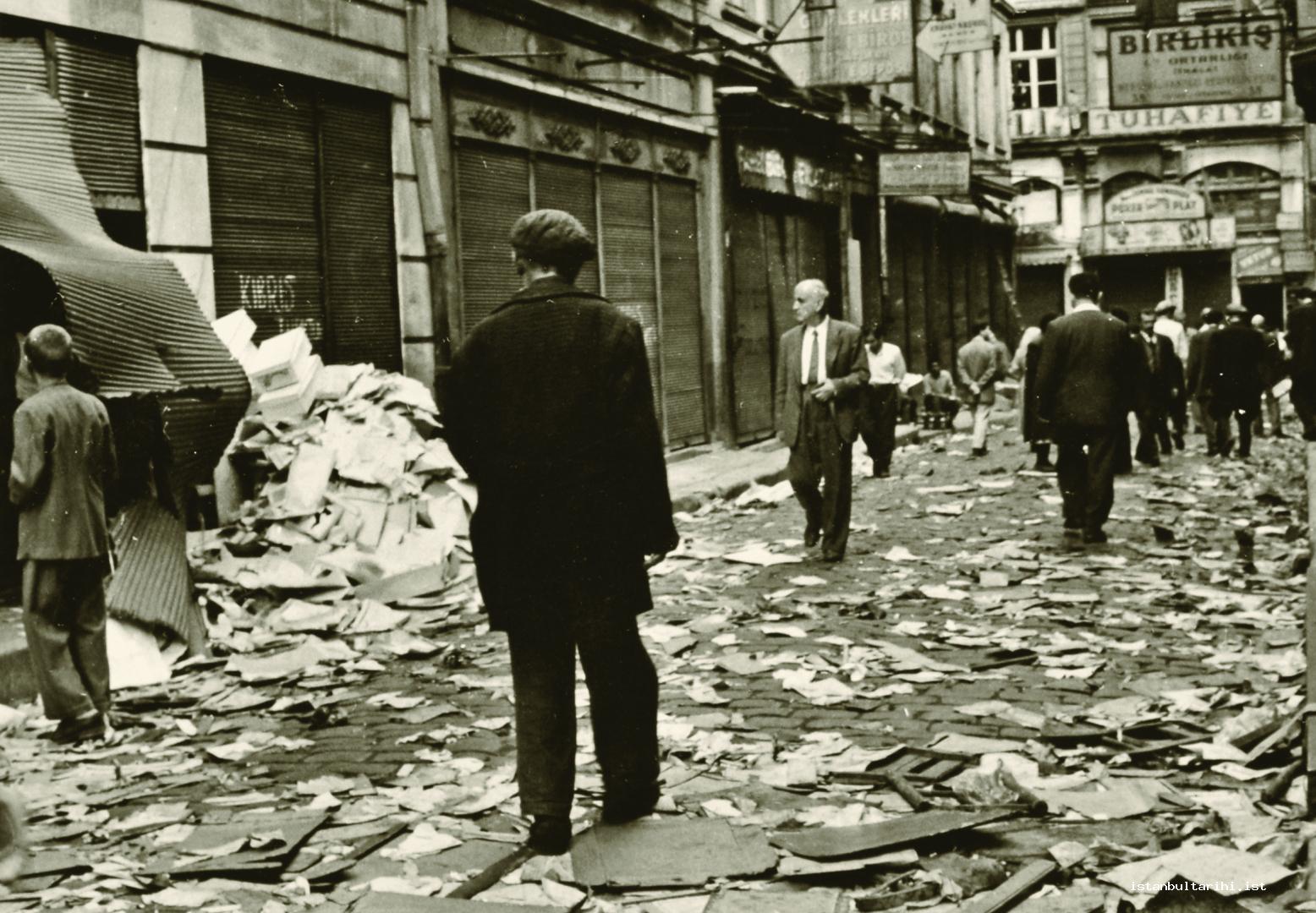
Well, what does this Bosphorus mean to you?
It does not mean a lot to me since I haven’t lived at Bosphorus. My first memories about Bosphorus are composed of solely Kabataş High school’s shore. I have some memories there; my four-years-long existence there has a meaning. From time to time, when I have been at Bosphorus or when I was lecturing at Boğaziçi (Bosphorus) University -this may be somewhat interesting-, I was inspired for the “Redbud Poems” while going down to Bebek from the university. Redbuds blossom during April and May and as you know their flowers fall off in a short while. I used to lecture on Saturdays; we used to walk through that road with my students after the class and get to the Bebek Coffee House. I have been very charmed by that walks, chats throughout the way and redbuds falling down the road like a purple carpet. I do not have any other place at Bosphorus where I have memories apart from the neighbourhood of Kabataş High school’s shore and Bebek Coffee House.
And, Emirgan?
Oh, yes Emirgan... I wandered Emirgan in company of a novel.
Which novel?
Aylak Adam (The Loiterer) by Yusuf Atılgan... So interesting. Once I wanted to write something on whereabout the protagonists of the novels that I liked and valued a lot wandered in Istanbul but I couldn’t make it. Aylak Adam was published in 1958. It is really a very distinct novel for our generation. It is a novel of a generation. Deceased Yusuf was quite older than us. I guess he was born in 1921. That’s he was 15 years or so older than us. However that novel seemed to grasp the spirit of the youth then - the youth at the ages of 19-20 in 1955- or the spirit of that era; we found ourselves at that loiterer character. Therefore, thinking Aylak Adam (The Loiterer) and its chapters passed particularly at Emirgan - Atılgan always calls Emirgan as Mirgün- as some sort of a travel guide, I tried to follow the road of “the loiterer” beginning from the ramp going upwards from Emirgan Çınaraltı and to find “the small sea” mentioned in the book. I wrote about this as well.
Later on you must have met Emirgan in Huzur (Peace) as well.
I read Huzur (Peace) in 1970s.
The one published by Tercüman?
The one published by Tercüman. I don’t know why but I did not read it before. I suppose there had not been a literary incident bringing Tanpınar to the agenda until then. And to be honest, somewhat because of the Selahattin Hilav’s essay...
That renowned essay and the renowned discussion following it...
Because of that essay, I got familiarized with it in company with such questions in mind: ‘There is a man like this. It is understood that this man -in the words of Selahattin Hilav- got very close to “scientific view of the world”’. Of course we were all Marxist back then. I wondered what kind of man he was. A novelist who considers the issues through a different problematic well before those Orhan Kemal, Kemal Tahir we knew within the world of Turkish novels; who considers being stuck between East and West as an issue of civilization. We said well, let’s read him. Then I observed that Selahattin’s essay and the approach in Tanpınar’s novel did not match up and I wrote that essay. However, the interesting thing is that; there is also this kind of coincidences in my life: the woman with whom Mümtaz fell in love was called Nuran. The woman with whom I fell in love was also called Nuran in 1976 when we still felt the thrill of Tanpınar. We intended to wander the places Mümtaz and Nuran wandered together with Nuran, the woman I fell in love with. However, we could not make it somehow. This was something I wanted a lot. Particularly after the experience of Aylak Adam (The Loiterer) by Yusuf Atılgan, I have always wanted it. That’s, reading the novels as a travel guide and wandering the places the protagonist wandered by his/lover or alone like him... Unfortunately, this desire could not come true for Huzur (Peace).
Any other place or incident that has an important place in your life in Istanbul...
Incident? Definitely, September 6-7 incidents... The day of September the 6th... Oh, by the way, I will add something else; that’s, cinemas... There used to be cinemas on both right side and left side of the roads between Saraçhanebaşı and Vezneciler.
I mean former Direklerarası (Between the Columns).
Former Direklerarası… Memoirs mostly mention Beyoğlu cinemas. As if only Beyoğlu has cinemas in Istanbul! Actually there used to be such nice cinemas at Fatih, Beyazıt, Çarşıkapı, Çemberlitaş and Sultanahmet. Şehzadebaşı used to keep its position as an entertainment hub, following the former Direklerarası tradition, in 1950s. Those shops selling musical instruments and notes and those bookstores selling university books were next to each other on the left of the road to Beyazıt from Vezneciler; they used to be on the main road since Vezneciler underground passage was not open yet. İskender Kutmani’s music store and Zeynelabidin Cümbüş Evi was there. The trams going towards Fatih or Edirnekapı used to twist around the pond at Beyazıt Square passing by these shops on the left when they were going towards Vezneciler and pass through a women’s hairdresser on the right – I still remember this hairdresser because its signboard read “Damer Friseur” in German – we did not encounter shop titles or advertisements in foreign languages back then, particularly not in Fatih. Probably because of this, I used to wonder why this hairdresser had its signboard written “Damen Friseur” whenever I passed through it by tram. One of my friends said “Status”. That guy probably wanted to show that he received hairdressing training in Germany by writing “Damer Friseur”. Anyways, when you arrived Şehzadebaşı from Vezneciler, the first cinema on the right was Ferah Cinema. Turan Cinema was the next. Milli Cinema was on the opposite side of Ferah. There was another cinema but I cannot remember its name. Those movies shown at Beyoğlu usually came to our side; that’s, cinemas in Fatih, a week later. Those cinemas mean a lot for me.
They were also very close to your home. It is something like falling into the heaven for a child lived in those years...
Definitely, just like that… The last cinema opened at Şehzadebaşı is the Yeni Cinema right opposite of the mosque. It was opened in 1953 and became the cinema of our early youth. It was a unique blessing for us as the cinema-lovers of Fatih that it screened the same movies at the same time with Beyoğlu cinemas. The movies used to change once a week and I was one of the regulars of Yeni Cinema. I have this weird habit of asking “Why am I like this?” from time to time. I fix some places within my life. The cashier girl at Yeni Cinema knew me, she would ask “Would you like to get 8-1 again?” or “8-2?”. There was a block; the front row of that block was the eighth row. There was a gap behind that, constituting the second block starting from the ninth row. I used to prefer the seat number 1 on the first right of the eighth block. I would not even go to those matinees when those seats were full. This, and then the fact that particularly the motel I stayed in Bodrum, the room I stayed in that hotel, the venue where I ate and the area where I entered the sea were all same… May everything stay same, may nothing change. Not “continuing by change or changing by continuance”, “continuing without change”… Perhaps we can associate this with “narrowing down the life on purpose” as well. What was I talking about? Şehzadebaşı Cinemas occupy a very important place in my life. Let me tell you a fine story. They were screening Sarı Yapıncak (Yellow Grape) probably at Ferah Cinema, casting Muzaffer Tema and Mesiha Yelda... Mesiha Yelda is the daughter of a wealthy family, and Muzaffer Tema is her violin teacher. He is about to start the first lesson at the pergola, the violin is on the table. When Muzaffer Tema attempts to take the violin, a voice from back gallery –the matinee where I was as well-, “Brother Muzaffer, Brother Muzaffer; do not bother yourself. It will play even if you don’t touch it.” Apparently he saw the movie before. The violin starts to play before Muzaffer Tema takes it into his hands. The cinema collapsed with the laughter. Since they could not manage the synchronization, violin starts to play before Muzaffer Tema takes it into his hands.
We were talking about September 6-7.
Why have September 6-7 made me think about cinemas? Because I was watching a movie of John Ford played under the title of Kan Kalesi (Castle of Blood) in Turkey at Milli Cinema with one of my friends during September 6-7. It is a very nice Western movie. Some noises started to be heard from the outside by the end of the movie, the light turned on and they said “They’ve placed a bomb at Atatürk’s house in Thessaloniki; everybody is walking to the Greek Embassy to protest, for your information. You join as well!” and so on.
Provocateurs?
Sure, provocateurs… Early evening… We left the movie incomplete and got out. Cinema was empty, everyone hurrahed and so on… My friend was a postman, an intellectual person, young… He said, “Ok, I will go to Beyoğlu.” I said, “I will go home!”, and fortunately I did go home. A great trouble arose. We went to Beyoğlu, İstiklal Street two days later; I have not even seen something like that throughout my entire life. Cloth batches, refrigerators, washing machines, jewelleries on the ground… I mean, it was really unbelievable. Of course there were police and gendarmerie; you could only pass from a distance. It was dreadful. We saw the photographs, heard about the incidents later. It was really grave. However, such a complete provocation. As you know, Mithat Perin’s Ekspres newspaper covered the news.
Well, what does İstiklal Street mean to you?
Beyoğlu, İstiklal Street means “cinema” for me, just like Şehzadebaşı. Since we used to think which movie or movies to go all week long, we used to go to that cinema directly and enter the hall trembling. Because, entering the hall had a ceremonial meaning. I used to cuddle up in the seat and try to include my own image within the adventure on the screen. 1955-1956 were the years when I went to the cinema almost daily and sometimes watched three or four movies successively. The patisseries and cafes at İstiklal Street are also the indispensable places of our early youth. We used to stop by the patisserie before the cinema, chat with someone while awaiting the movie; and sometimes, if we had time, we would go to the patisserie after the movie. The favourite patisserie of our youth was Baylan. As Salah Birsel wrote in his Ah Beyoğlu, Vah Beyoğlu (Oh Beyoğlu, Poor Beyoğlu), neophyte men of letters haunted Baylan in 1954.
Did you not go to the patisseries like Markiz and Lebon?
We used to go to both Markiz and Lebon... However, we used to enter Lebon somewhat timidly and shyly. I should confess that Tokatlıyan, Lebon, Markiz used to seem to us -as the neophyte men of letters- distant, old and stranger; as the places where Yahya Kemal, Abdülhak Şinasi used to go. I was very surprised once to see Haldun Taner there. I have first seen Abdülhak Şinasi Hisar at Markiz as well. Definitely the patisserie where we could enter without hesitation was Baylan. We, who were ending their early youth by the end of 1950s, used to feel as if sitting at one of the long-dreamed pavement cafes of Paris or Vienna while we were sitting at the patisseries between Tünel and Taksim. They were a little bit Café Select, a little bit Deux-Magots, names of which we learnt by heart like magical words! We used to go to the cinema after eating our mille-feuille and drinking our coffee with milk presented us by Leonidas at Baylan.
We know that you have been a regular of Kitchenette Cafe for a long while. You really like to live the life by narrowing it down. Our greatest hope is that you continue to live and produce a lot. Thank you very much for sparing time...
FOOTNOTE
1 Fenerci Hüseyin Dead end, keeps its name and existence in Zeyrek.
